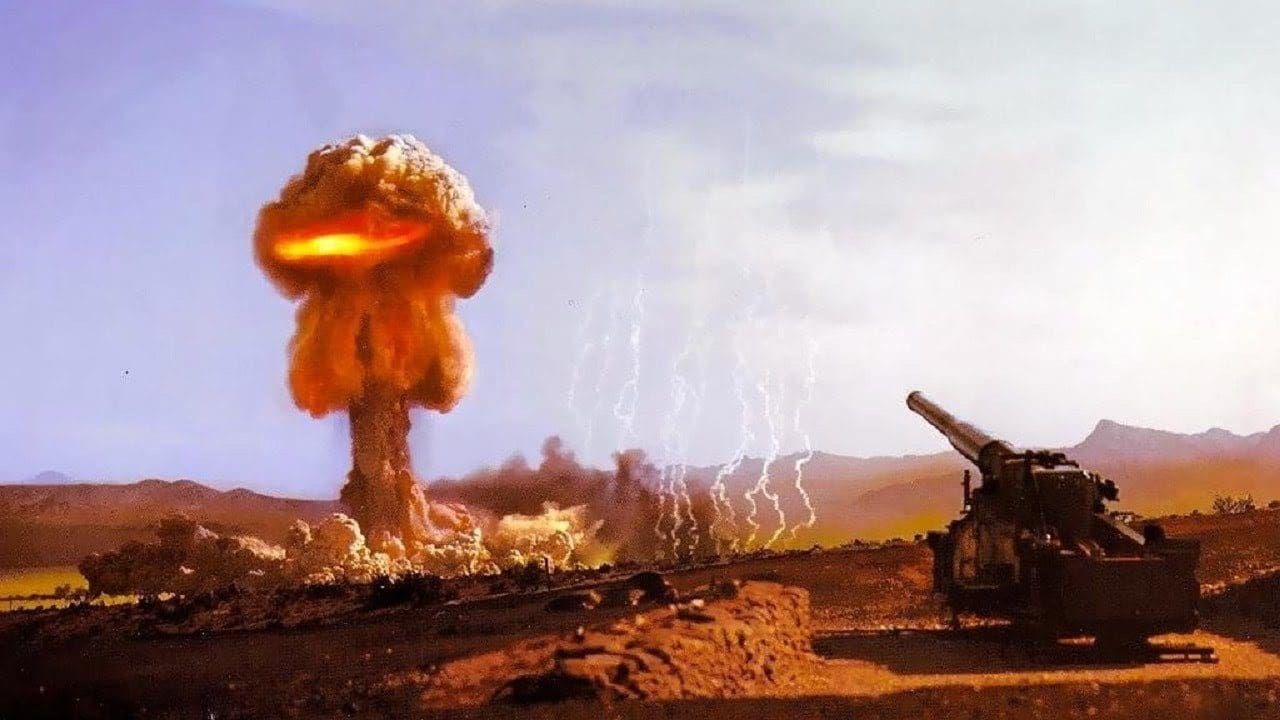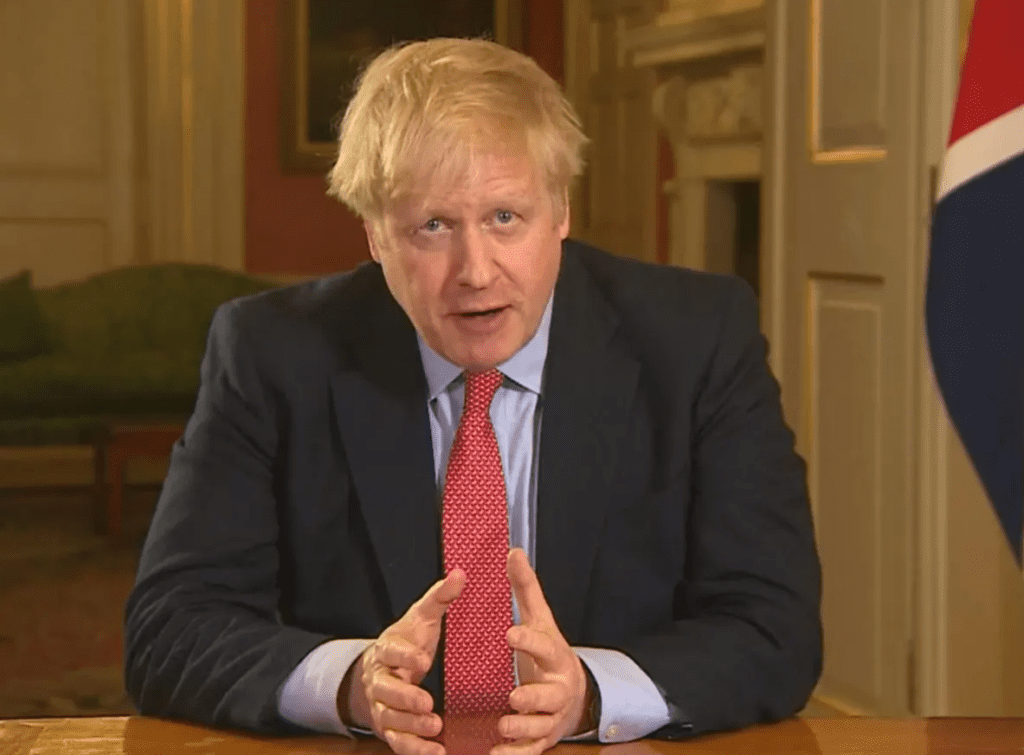

Is the Risk of Nuclear War really One in Six? It is Hard to Envisage a Scenario in Which Putin Would Gain From Using Nuclear Weapons
Much attention has recently been paid to an article by Max Tegmark, in which he gives the odds of nuclear armageddon arising from the Russia-Ukraine war as one in six. It’s a highly reductive analysis (of the sort one might expect from someone with a mathematical background), which might explain both its apparent appeal and the trenchant criticism it has received.
Tegmark doesn’t document his chain of reasoning in any serious way – he just pulls probabilities out of thin air – so while it’s difficult to infer his prior assumptions, many who consider the risk of nuclear war to be high seem to make a few false assumptions:
- That the use by Putin of tactical nuclear weapons (TNW) would turn around the situation on the battlefield, absent a military response from the West.
- That the non-military consequences of the use of TNW wouldn’t be that dangerous for Putin.
- That increased support for Ukraine by the West would increase the risk of full-scale nuclear war, and decreased support would decrease the risk.
I’ll address each of these in turn.
Tactical nukes don’t smell like victory
There’s no clear way to define a TNW, but roughly speaking it’s a relatively short range, low-yield weapon – anything up to 30 kilotons, or perhaps as high as 100 kilotons. Regardless of the precise definition, everyone agrees that Russia has the world’s largest and most varied arsenal of TNW, with many Russian systems (such as the Iskander surface-to-surface missile) having been designed for both conventional and nuclear use. It’s debatable whether their doctrine on the use of TNW would really allow them to be deployed in the event of, say, the Ukrainian Army entering Crimea (would that amount to a threat to the “very existence of the state”?), or whether the Russian state apparatus – those who would have to sign off on it – would back Putin if he decided to use them. It’s also debatable whether individual officers would obey a launch order, knowing that the retaliation from the West could be personally fatal; but nevertheless, they do have the weaponry.
As discussed recently by Justin Bronk and also by William Alberque there are, broadly speaking, three possible scenarios for the use of TNW.
First, a “demonstrative” test in an unpopulated area (say, the Black Sea or the Novaya Zemlya Test Site). This would be tantamount to breaking the long-held “nuclear taboo” without any result except to strengthen Western support for Ukraine, and being extremely damaging for Russia and its interests around the world. This therefore seems very unlikely.
The next scenario would involve a strike against a Ukrainian population centre, which would definitely break the “nuclear taboo”. Again, the military value would likely be small, but the political fallout would be huge, not just from other countries but also from the Russian population – many of whom have relatives in Ukraine. Thus it would not only turn the world against Putin and the Russian political elite, it would make them vulnerable internally. The idea that such a strike would demoralise the Ukrainian military and population, rather than make them ever-more-implacably opposed to, and even more fiercely determined to defeat Russia, is at best questionable: the moral effect could, instead, be the complete collapse of the Russian will to fight. Again, this scenario is very unlikely.
This leaves the third scenario: battlefield use of TNW. The first problem here is that these weapons aren’t as devastating as people tend to think. For example, a simulation of a large (30kt) TNW airburst over Mariupol gives a result with significantly fewer casualties than what Russia “achieved” with conventional weaponry, and leaves the majority of buildings still standing. A simulated 10kt detonation wouldn’t really be life-threatening to humans much beyond a mile.
Such an attack wouldn’t necessarily confer any real military advantage unless there were large concentrations of Ukrainian forces in the blast/radiation zone – but this doesn’t match the Ukrainian disposition of forces. While Russia would have been able to destroy Azovstal and its defenders with a single TNW, other such concentrations of forces would be hard to find, let alone target in such a way that Russian forces wouldn’t also be in the danger zone (impossible on the front lines), meaning Russia would have to expend large numbers (dozens, or even hundreds) of nukes in order to destroy enough of the Ukrainian forces to achieve a strategic effect – and this would of course raise the risk of a Western military response very greatly.
But this brings us to the next problem, which is the effect on Russian forces. Regardless of what TNW could do to Ukrainian troops, there would also be the very considerable risk that Russian troops (already severely demoralised and prone to desertion) would be so stressed by witnessing the use of TNW that they might flee. They obviously don’t have hazmat suits and almost certainly no potassium iodide on hand, and while some of them may have been stupid enough to dig trenches near the Chernobyl NPP earlier in the war, I doubt they’re unaware of the possibility that deadly radioactive fallout could easily land on them. They might also believe that even being in sight of such a blast would make them vulnerable to radiation sickness or later cancers – and depending on the distance, that could well be true. It would take a brave officer to order an advance through an area recently hit by a nuclear bomb, with any assertions (however accurate they might be) that the post-blast risk would be minimal being scarcely credible.
But there’s another problem. As William Alberque notes:
Ukraine does not operate with a large enough concentration of forces to justify a 10–100 kiloton blast. Smaller nuclear weapons would be of even less use, as below 10 kilotons, their effects are overtaken by those of high-end precision mass-effect artillery, such as the Tornado-G and -S and the TOS-1M/1A and TOS-2, especially when using thermobaric warheads.
In short, not only could battlefield use of TNW in Ukraine be massively counter-productive for Russia, in the end it might only barely be more effective than conventional systems.
This is of course to assume Russian TNW systems actually exploded as intended, that the Ukrainian Army (with a roughly 50% kill rate) didn’t shoot down the missiles, and that they weren’t destroyed using HIMARS or other systems while being transported and prepared for use. Russia stores its nuclear warheads in a few well-known locations, and uses special troops and transport methods for nuclear warheads that would likely (though not definitely) be observed in advance. In addition, any build-up to the use of TNW would require Russia to ramp up its overall nuclear preparedness, which would be obvious to the West (and therefore Ukraine). Essentially, Ukraine would have advanced notice and could prepare accordingly.
Putin would also have to consider that the nuclear fallout could disperse over hundreds of miles and pose a serious risk to the civilian population not just in Ukraine, but also potentially in Russia. That’s unlikely to be popular. And the annihilation of significant parts of the territory that Russia seeks to conquer, while leaving behind a lot of irradiated material that could make certain areas uninhabitable (or at least agriculturally unproductive), would vitiate the purpose of the invasion to such a degree that Putin could hardly claim much of a victory.
Tactical nukes are no Wunderwaffe, and indeed Putin does seem to be aware that their value to him lies in having them, not using them – which is why he takes the greatest possible advantage by (implausibly) threatening their use every other week.
There would be a non-military response
There is of course the likelihood that Russian forces in Ukraine would be targeted and severely degraded by NATO following any use of TNW (thus losing Putin the war much more quickly), but less attention has been paid to the non-military ramifications of breaking the long-held “nuclear taboo”. This is presumably because the near-inevitable military response is far more exciting to consider, but what else might happen in the event that Russia used TNW in Ukraine?
One likely outcome is that Russia would find itself cut off not just by Western nations but also by China, India, Brazil, Hungary and other fence-sitters. In being cut off by China – on which it now depends very heavily – it could potentially lose not only a major hydrocarbon market but also the ability to import many goods, especially high-tech goods – without which it couldn’t rebuild its already heavily depleted military, not to mention the wider economy. And while this wouldn’t happen overnight, it could result in a total collapse of the Russian economy. The first against the wall would be Putin, but he might hope to survive as a puppet of Beijing – although that would depend on internal Russian politics, and partly on the Western non-military response. In short, walking away from Ukraine ought to be preferable to Putin than to lose Ukraine and his few remaining friends.
Breaking the nuclear taboo could also cost the support of usually-reliable countries like Iran and North Korea. Leaving aside the dubious fatwa against the use of nuclear weapons, Iran would have to consider that accepting the use of TNW could be to invite Israel to deploy them against Iranian nuclear facilities, some of which are buried deep underground to protect against conventional “bunker-buster” bombs; but in any event, it would greatly increase the odds of Israel launching strikes against Iranian nuclear facilities in the near term. Given this, it may not be an entirely unconnected fact that Iran has not accepted the results of the sham referenda in the occupied parts of Ukraine, which some consider might be a precursor to the use of TNW.
Even North Korea would likely have to condemn the use of TNW, not just due to pressure from Beijing, but also because it knows that a world in which nuclear weapons are actually used (rather than merely developed shoddily) would put itself at risk of a pre-emptive conventional or TNW strike from the US, which it most fears.
Further, there could be severe direct impacts on Russian elites resulting from the near-inevitable confiscation of all Russian-held assets in the West, and the possibility of serious divisions and political instability inside Russia that could be stoked by Western intelligence services, which (so far as is publicly known) have not attempted to meddle in post-Soviet Russian internal affairs. Besides information warfare and on-the-ground subversion of Russian politics, it’s even possible that more gung-ho outfits like the CIA might get into the already-popular Russian defenestration game.
In sum, Putin and his inner circle would have to consider that using TNW would be to paint a massive target on their own back, even in the absence of a Western military response.
“De-escalation” doesn’t mean weakness
As noted by Tegmark in response to some of his critics, the term “de-escalation” is often misunderstood. It doesn’t mean appeasement, capitulation or even necessarily some form of compromise.
In a hostage situation where armed police are surrounding a building and a negotiator is called upon to persuade the hostage-taker to give himself up, the means of de-escalation is to persuade the hostage-taker – from a position of strength, and in a calm and reasonable manner – that any of his escalatory options, such as shooting at the police or killing the hostage, will leave him worse off in the end. In short, “we have a bigger stick”.
Such it is with Ukraine. Reducing support for Ukraine in the face of Putin’s nuclear blackmail would only be the “first sip of the bitterest cup”, condemning Ukrainians to slavery and emboldening Putin (and others) to repeat the trick, greatly increasing the chances of facing a nuclear conflict of some kind further down the road, and leaving all countries not under a “nuclear umbrella” even more vulnerable to exploitation by the mad and the bad. It would also greatly incentivise non-nuclear states to develop nuclear weapons, and greatly decrease the credibility of a number of security guarantees (particularly the U.S. nuclear umbrella), causing a seismic shift in international relations and creating a much more dangerous world for us and future generations.
The correct means of de-escalation in this current environment is to communicate to Putin (and his inner circle) that nothing – including the use of nuclear weapons of any sort – will help his cause. Given that he may not yet have realised that he will lose this war, the best means of communicating that fact would be to increase Ukraine’s fighting strength, since if this is a dangerous moment for the world then it’s because the support so far provided has not been of the overwhelming kind. Providing modern tanks, jets and longer-range missiles would be truly decisive – and obviously so to the Russian population. This is Putin’s off-ramp in the face of a restless populace: “Don’t blame me, it was NATO wot dunnit.”
And thus can we purchase peace in our time for Europe.







